The “Morijang“, 머릿장 in Korean, is a unique piece of furniture found in the Korean furniture collection. It likely emerged during the 18th or early 19th century and is commonly referred to as the headside chest in English.
Determining the age of furniture can be a complex process, often hindered by a lack of information and English-language studies. Several key parameters are required to assess the origin of the furniture with varying degrees of precision.
Materials, such as wood and metal components, as well as the item’s shape and dimensions, are crucial elements for this analysis.
Examining numerous pieces of furniture from various collections, both in Korea and abroad, has enabled us to formulate specific hypotheses. In this regard, the study of the “Morijang” proves to be particularly intriguing.

Early period – Late 18th to mid 19th centuries.
The morijang was a small cabinet designed to be placed beside the bed in a room. The oldest pieces we have discovered date back to the late 18th and mid-19th centuries, with most of them belonging to the Collection of the National Museum of Korea. On average, these cabinets have dimensions of H. 50-70cm, W. 85-95cm, and D. 35-38cm.
Many of these cabinets were constructed using a combination of frames and panels. The frames were typically quite narrow, measuring around 1cm in width. These dark-colored pieces of furniture often lacked excessive decorations and were primarily intended for use in men’s quarters. Prized woods like Zelkova were commonly used in their construction. When fittings were present, they were typically robust and made from yellow brass.


Red pine wood. Early 19th century.
Width 99,5cm, Width 40,5cm, Height 77,1cm.
Collection of the National Museum of Korea.

Elm wood, yellow brass fittings. Mid 19th century.
Width 87,3cm, Width 37,0cm, Height 77,2cm
Collection of the National Museum of Korea.

chest covered with paper.
Colored paper, lacquer finish, pine wood, wire, tin fittings
H. 60cm, W. 76cm, D. 32,4cm.
Mid to late 19th century.
Collection: Edward Reynolds Wright. Weisman Museum. USA

Zelkova wood, iron fittings
H. 71cm, W. 92,7cm, D. 42cm.
Mid to late 19th century.
Collection: Edward Reynolds Wright. Weisman Museum. USA

Zelkova wood, yellow brass fittings
H. 59cm, W. 84,2cm, D. 32,5cm.
Mid to late 19th century. Collection National Museum of Korea.
Due to these characteristics, we believe that this type of furniture was not exclusively used for storing clothing but also for books, documents, and valuable items. The top plate, typically made from a single piece of wood, was aligned at right angles with the side panels. Three small drawers were positioned beneath the top plate, and a double door was installed in the center of the chest. In some instances, chests were elevated on straight legs. Additionally, in certain cases, the top panel had both sides raised to prevent objects placed on it, such as scrolls, from rolling off.

Zelkova burl panels, pine frame, Yellow brass fittings. Early to Mid 19th century. Cholla province.
H. 78,5cm, W. 112cm, D. 48cm.
Collection: Edward Reynolds Wright. Weisman Museum. USA

Zelkova burl wood front panels, pearwood frame and molding, paulownia sides and top. Yellow brass fittings.
Late 18th to early 19th century.
Suwon City, Gyeonggi province.
Collection Edward Reynolds Wright. Weisman Museum, USA.
Mid period – Mid 19th to early 20th centuries.
By the end of the 19th century, furniture production increased significantly in response to rising demand. The design of the Morijang became somewhat standardized, with a few design modifications. The dimensions remained largely consistent, but the depth increased to 42-45cm. The furniture continued to be manufactured using the same framework of frames and panels, but the frames were widened to 2-2.5cm, which reduced the level of skill required for their construction.

Paulownia and pine woods with lacquer finish, brass fittings
H. 89cm, W. 90cm, D. 45cm. DATE 1800s.
Collection: Weisman Art Museum, Minneapolis, USA.

Pine wood, yellow brass fittings. Late 19th century.
H. 82,8cm, W. 90cm, D. 41cm.
Built on elevated legs to protect the chest from the heated floor system.
On most pieces, the top plate protrudes, and the corners are frequently reinforced with metal corner plates. The hinges, which are more numerous, are crafted from white or yellow brass and feature square or circular patterns.

Yellow brass fittings round pattern.
Collection of the National Museum of Korea,

White brass fittings square pattern.
Collection of the National Museum of Korea,
Late period 20th century.
The dimensions of the furniture are as follows: H. 80-85cm, W. 87-90cm, D. 45cm. All the models share a similar construction, featuring three to four small top drawers and a double door in the middle front. The top of the chest is now crafted with a thinner panel inserted into a frame. The furniture is supported by convex cabriole legs. White or yellow brass metalwork is used for both structural and decorative purposes, often adorned with motifs such as bats and butterflies.

Typical design of a 20th century piece.
Elm wood, White brass fittings.


H. 84cm, W. 87cm, D. 44,5cm.

During the peak of the trade in the mid to late 20th century, some restored pieces were rebuilt from “Nong.”
As each part of the “Nong” had a similar design, dealers would separate them to create two “Morijang” pieces, which were easier to sell and offered better profits. Only an expert’s trained eye could discern the transformation.

OTHER “MORIJANG” CHESTS




Elm and pine wood, yellow brass fittings. Late 19th century.
Some parts of this chest have be painted with black and red color. This chest must have belong to a wealthy household.

Late 19th century Korean headside chest covered with black lacquer and mother-of-pearl inlay using the “Najeon” technique.

Elm and persimmon wood. Yellow brass fittings. 20th century.
Sold in Auction in Seoul, Korea.

Zelkova wood, yellow brass fittings. 20th century.
H. 35.8cm, W. 44.2cm, D. 26.8cm.
Collection of the National Museum of Korea.
It is typically constructed as a single-level structure that is shorter and narrower than a standard cabinet. This morijang, crafted from zelkova wood, features three drawers beneath the top panel and a hinged door underneath. Unlike the typical headside chest where the top panel extends beyond the body and the base is constructed separately, it exhibits several distinctions notably, the top panel and side panels are aligned at right angles, and ventilation holes are drilled into the side panels to serve as legs.


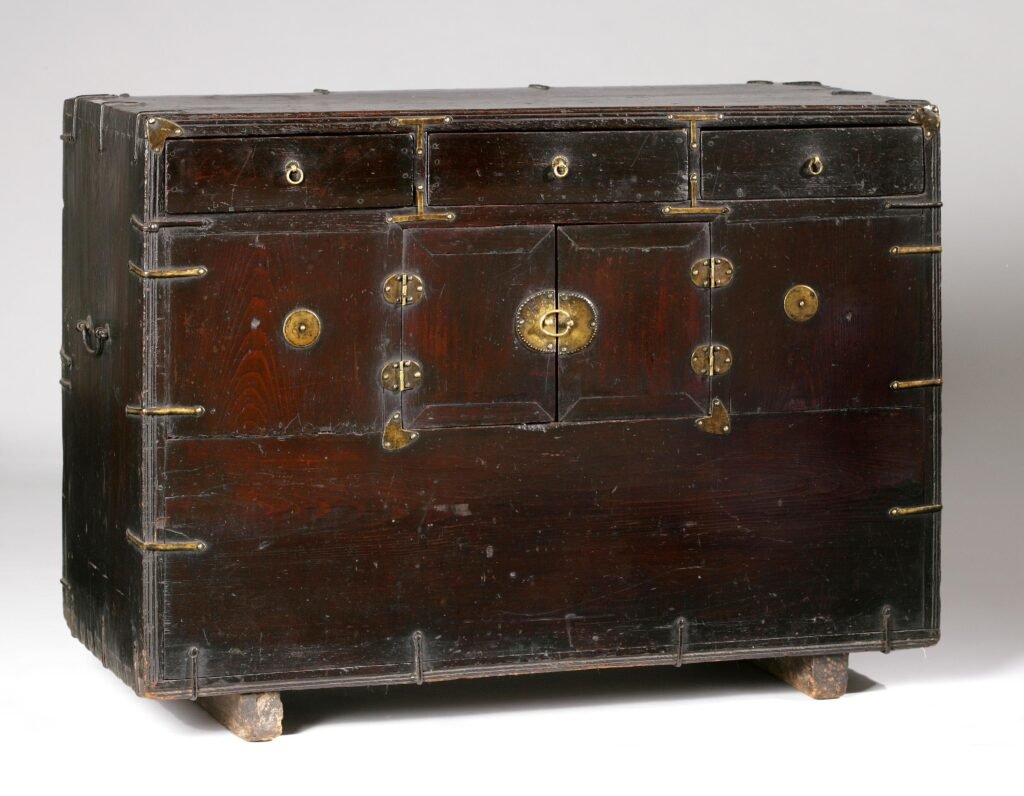
Collection: National Folk Museum, Seoul.

Collection: National Folk Museum, Seoul.
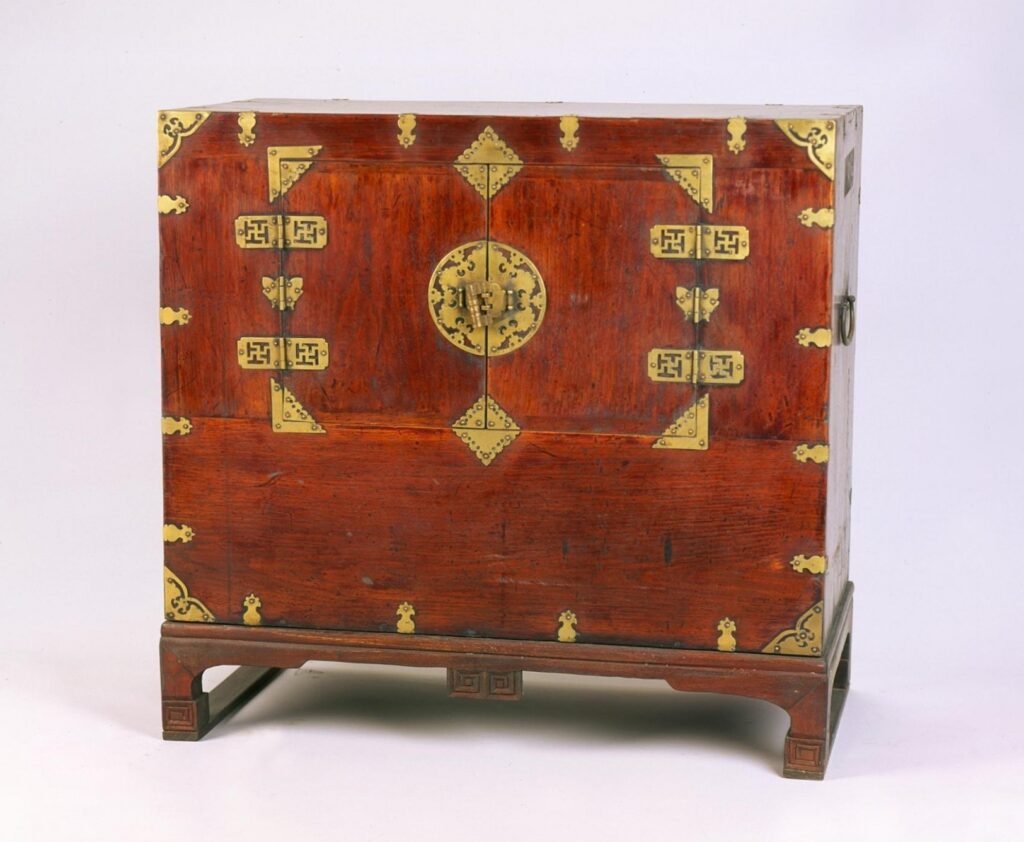
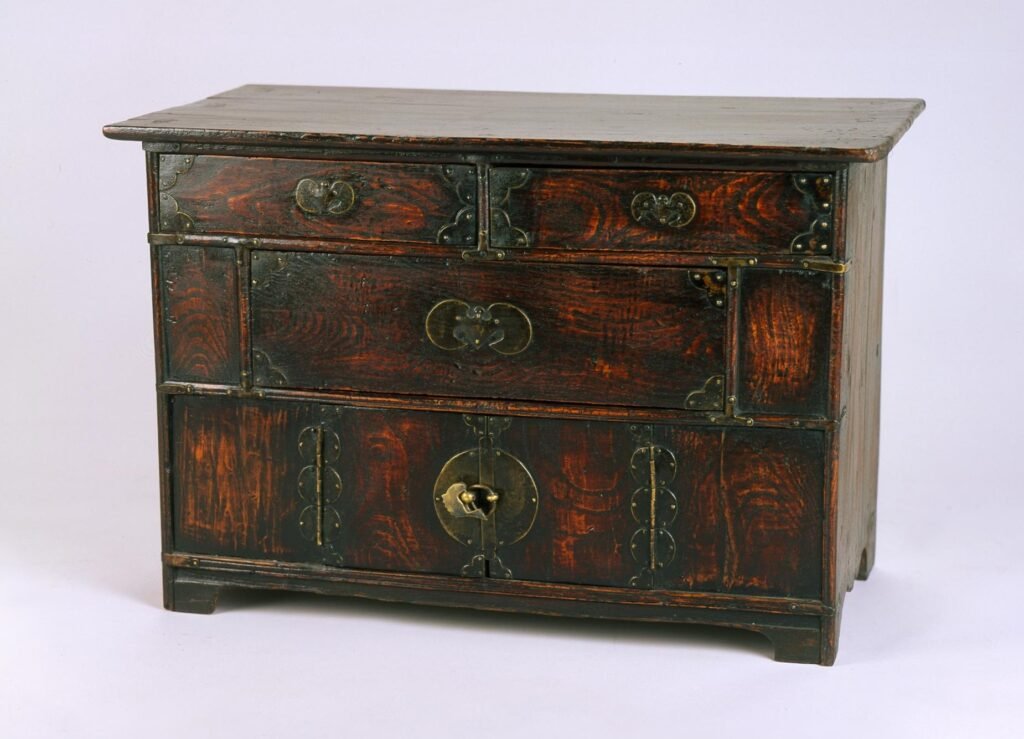
Collection: National Folk Museum, Seoul.


Collection: Korean National Folk Museum.

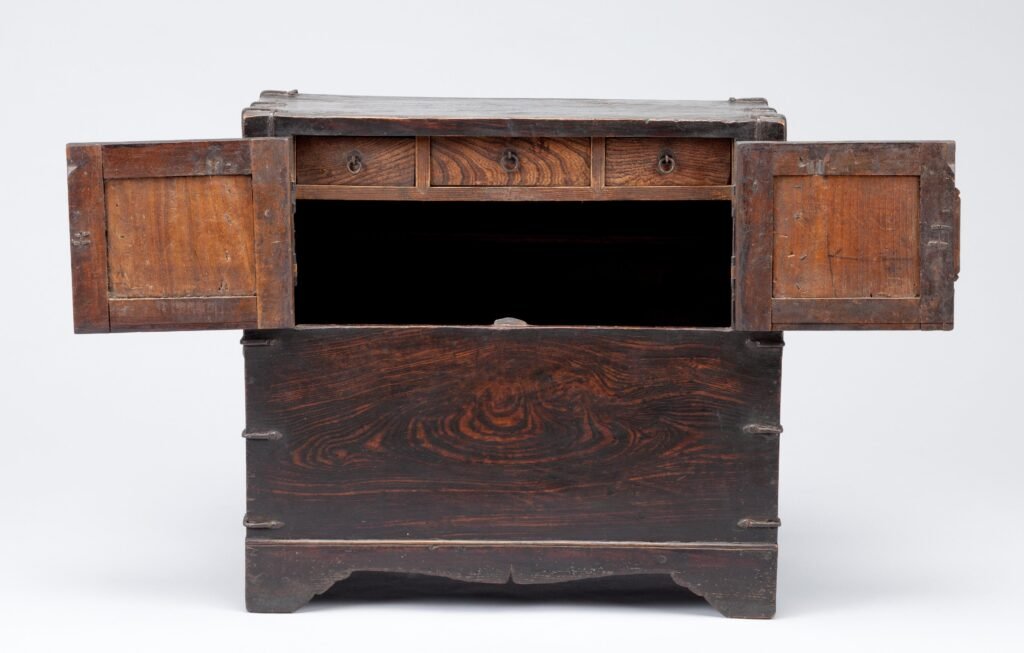

Collection: Korean national Folk Museum.
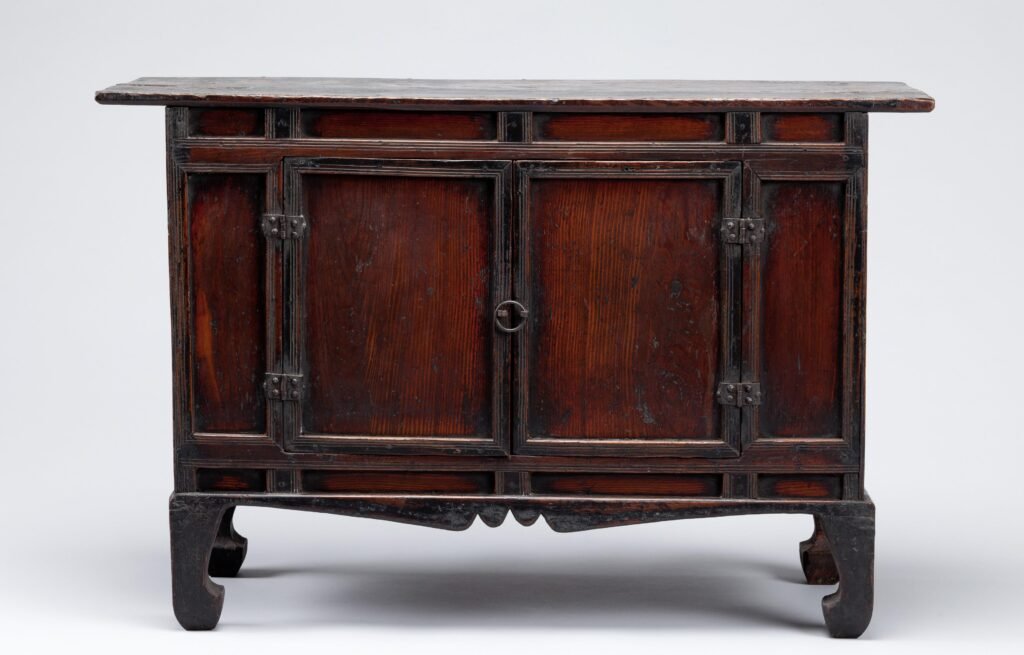





I have acquired a piece which someone has altered and would like to restore it , including replacing and matching appropriate hardware.
Please advise if this is possible?
I shall attempt to attach a photo. If it does not arrive and you can advise me , please do so !
many thanks for info in you fine article !!
Dear Cynthia, Please send us photo. You can also contact us on our Facebook page: https://www.facebook.com/groups/438949077447875
Best regards
Yves
[…] single-level Jang, called Morijang or head-side chest, was generally placed near the […]